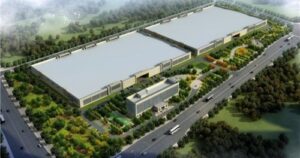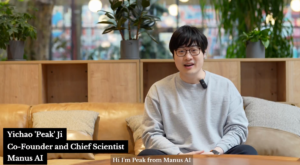Tariffs and a Turbulent Global Landscape: Pascal’s AI Gamble; Zhipu, Manus, and Taiwan Incursions; Solar Facilities, MCP, and Telepathy+

Understanding Recent Developments in American Tariffs and AI Investments
American Tariffs: A Historical Context
Recent tariff announcements in the United States have marked an economic shift, bringing effective rates to levels not seen since 1909. These changes are part of a broader political response, stemming from concerns about globalization and economic inequalities exacerbated during the pandemic. Economists are sounding alarms, predicting that these tariffs could lead to increased consumer costs and loss of jobs. Some experts have described these tariffs as a significant economic misstep, showcasing the political pushback against the “flat world” perspective associated with Thomas Friedman.
The “flat world” concept reflects a time when global supply chains, advanced logistics, and telecommunications made geographical barriers less relevant, fostering efficiency. However, this model has shown its vulnerabilities, leading to deindustrialization and socioeconomic disparities. Many critics argue that the covid pandemic exposed these fragile points, emphasizing the need for a reevaluation of global economic strategies.
The Shift to a “Spikier World”
The current transition from a “flat world” to a “spikier world” signifies a strategic economic reordering. U.S. Treasury Secretary Scott Bessent hinted at a "grand economic reordering" reminiscent of a new Bretton Woods. This reordering seeks to reformulate correlations in global economies and focus on localized capacities, bolstered by exponential technologies like automation, 3D printing, and artificial intelligence (AI).
In this context, tariffs represent a strategic disruption aimed at re-balancing global trade systems by reinforcing local production capabilities. The effects will likely ripple through the economy, intensifying scrutiny on traditional consumption and production methods.
The AI Investment Surge
In a parallel development, OpenAI’s recent fundraising of $40 billion, led by SoftBank, has attracted significant attention. This substantial investment positions OpenAI among the largest tech financing deals, driven by immense confidence in AI’s potential. Investors are now faced with a modern interpretation of Pascal’s Wager: investing heavily in AI could either yield monumental returns or risk substantial losses if they choose not to invest at all.
The prospects hinge on several factors:
- Continuous innovation by OpenAI.
- The profitability of current large language models (LLMs).
- The company’s ability to maintain a competitive edge against rivals like DeepSeek, who are rapidly developing quality alternatives.
While the pace of AI advancements is accelerating, concerns linger about OpenAI’s ability to protect its market position against competitors offering similar technologies. This leaves investors in a precarious position regarding the long-term success of such investments.
The Global AI Landscape: U.S. vs. China
As the U.S. engages in a fervent race towards Artificial General Intelligence (AGI) through private-sector initiatives, China’s approach appears more methodical. Driven by state priorities, China focuses on integrating AI within various sectors rather than aiming solely for superintelligence. This nuanced strategy reflects a commitment to national resilience and economic integration, particularly in a world characterized by spikes in innovation and opportunity.
China’s AI strategy is underscored by initiatives like “AI+”, aiming to incorporate AI technologies into everyday applications. This approach is complemented by a decentralized funding model, emphasizing innovation across multiple sectors instead of concentrating resources on a singular goal.
Implications for Future Economic Strategies
The current landscape reveals that the interaction between tariffs and investments in AI represents a significant evolution in global economic policies. As countries redefine their strategic capabilities, emphasizing local production and technological advancement, the dynamics of international trade are likely to change. The responses from both the United States and China illustrate differing philosophies in their quest for technological leadership and economic stability.
Overall, the evolving circumstances present both challenges and opportunities, highlighting a pivotal moment in economic history shaped by new technologies and shifting political ideologies. As industries adapt to these changes, the long-term impacts will shape the future of work, production, and geopolitics in a complex global framework.





